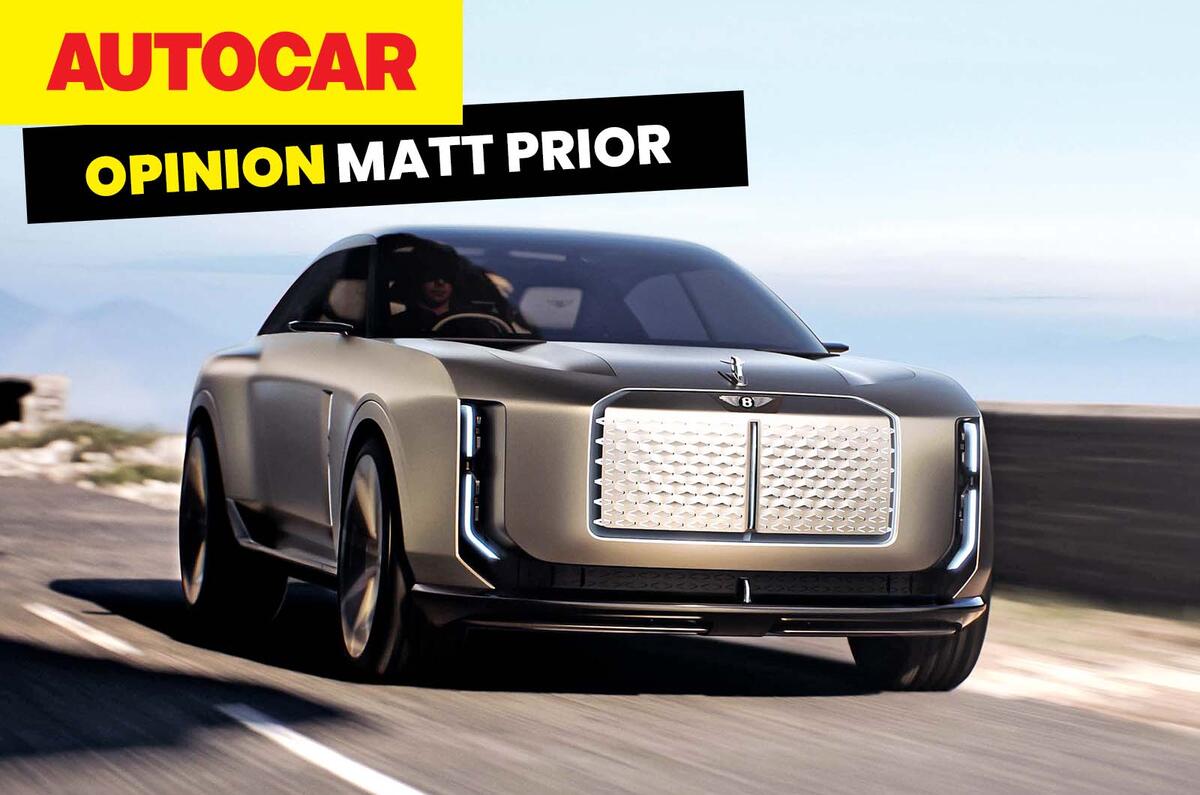Ever see something online and sigh and think that you know what the comments are going to be like? That’s how I felt when I saw the studio pictures of the Bentley EXP 15 concept car.
I feel like I could have told them. And while I know that what people say on social media is not a true representation of what the public thinks, especially those who can afford a Bentley, there is enough ‘Jaguar-lite’ and ‘yikes’ sentiment to see that this is a challenging car.
Bentley must have known that, mustn’t it? The EXP 15 is not set for production but that doesn’t mean it won’t inform the cars Bentley will make in future.
The company has form here: remember the EXP 9 F from the 2012 Geneva motor show? It was not exactly a looker, was not widely gracefully received, and while not destined for production in that form, it did preview the Bentayga, which arrived looking even worse.
‘Challenging’ seems to be a word of the moment. Even Julian Thomson, the General Motors designer who has created some truly beautiful cars, used it in our interview with him last month.
Designs, he thought, should challenge; although he works in an advanced design studio so he has more reason to believe that, and there’s nothing ungainly about his studio’s latest Corvette concept. But designers today do seem to like cars that are challenging. They like dissonance. Why?
Clearly it’s a choice. Car designers know what beautiful is because they’ve studied it, and they’re beautiful people with beautiful lives, houses, dogs and partners, and they can pull off wearing suits with trainers.
When it comes to dating apps and sessions on Rightmove, are they swiping yes on ugly people and houses because they’d like to be challenged? Because it doesn’t seem so.
So why the challenge when it comes to cars? Why should a car be difficult to look at? An argument goes that you think a car is beautiful straight away and then over time its appeal will fade. It’s too obviously pretty, or bland.







Join the debate
Add your comment
And there we have it, a revealing cross selection of views on todays car design, class and social standing rears its ugly head too,but on the whole the opinions tell us we should live and let live, it's the old my money my choice scenario.
The most disquieting thing about the rash of "challenging" designs - read butt ugly - is that they totally ignore their target market. Do you really think a prospective Bentley owner would but something that looked like that? Of course not. In today's unhappy world anything that reeks of success is frowned upon - so why advertise that you are not only rich (bad) but also totally without any taste? See also new Mercedes electrics and so many BMWs its hard to count. Mercs, for people like me, were beutifully engineered discreet luxury cars that I could drive to a client meetings in looking as if my company was successful but not shouting about it. I once went to a meeting in a Cerberra and was warned not to do it again. God only knows what the new Jaguars are going to look like. Here in Spain we are dodging all these ginormous Chinese monstrosities. Maybe they are the new style leaders?
buy something like that. Sorry